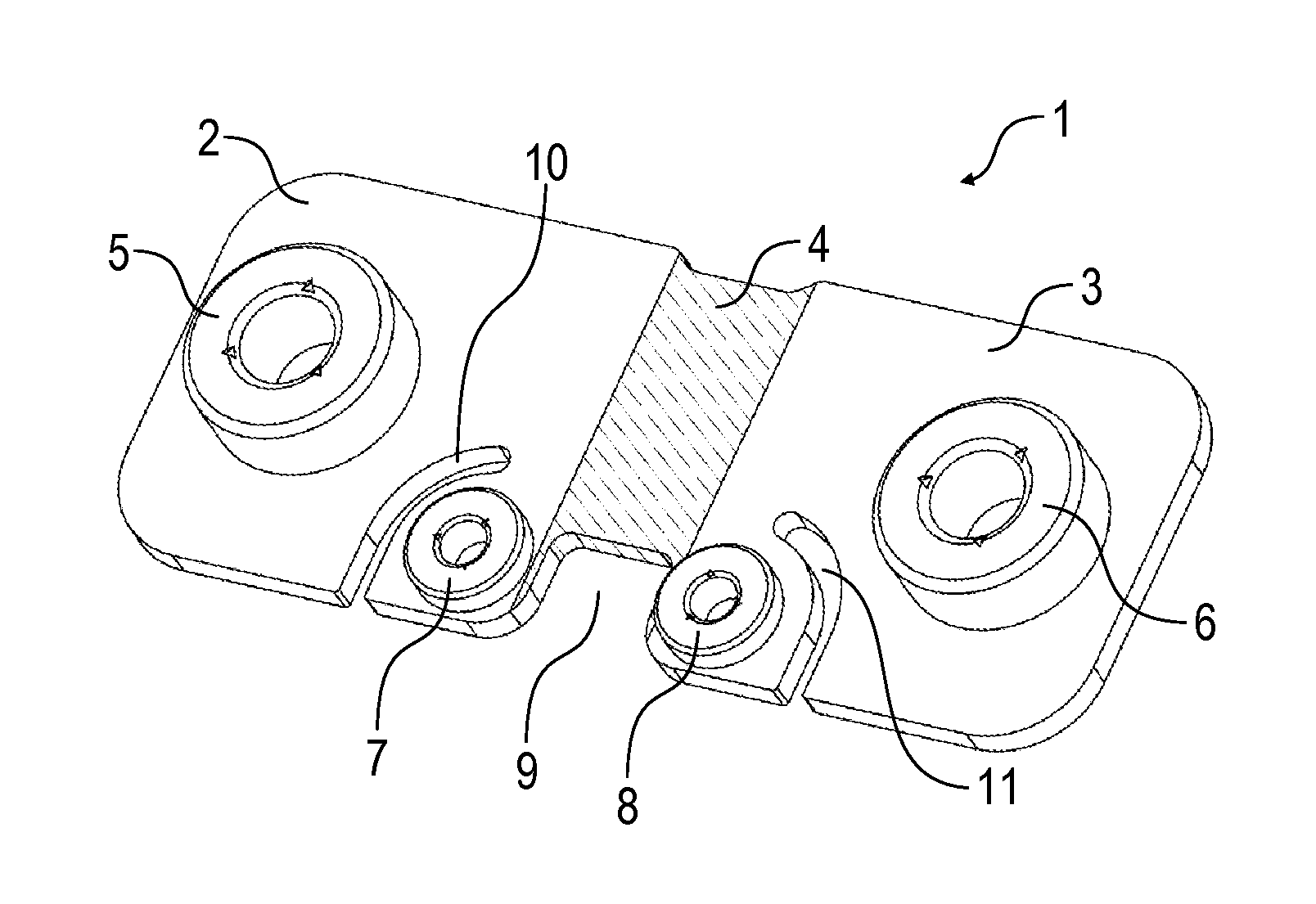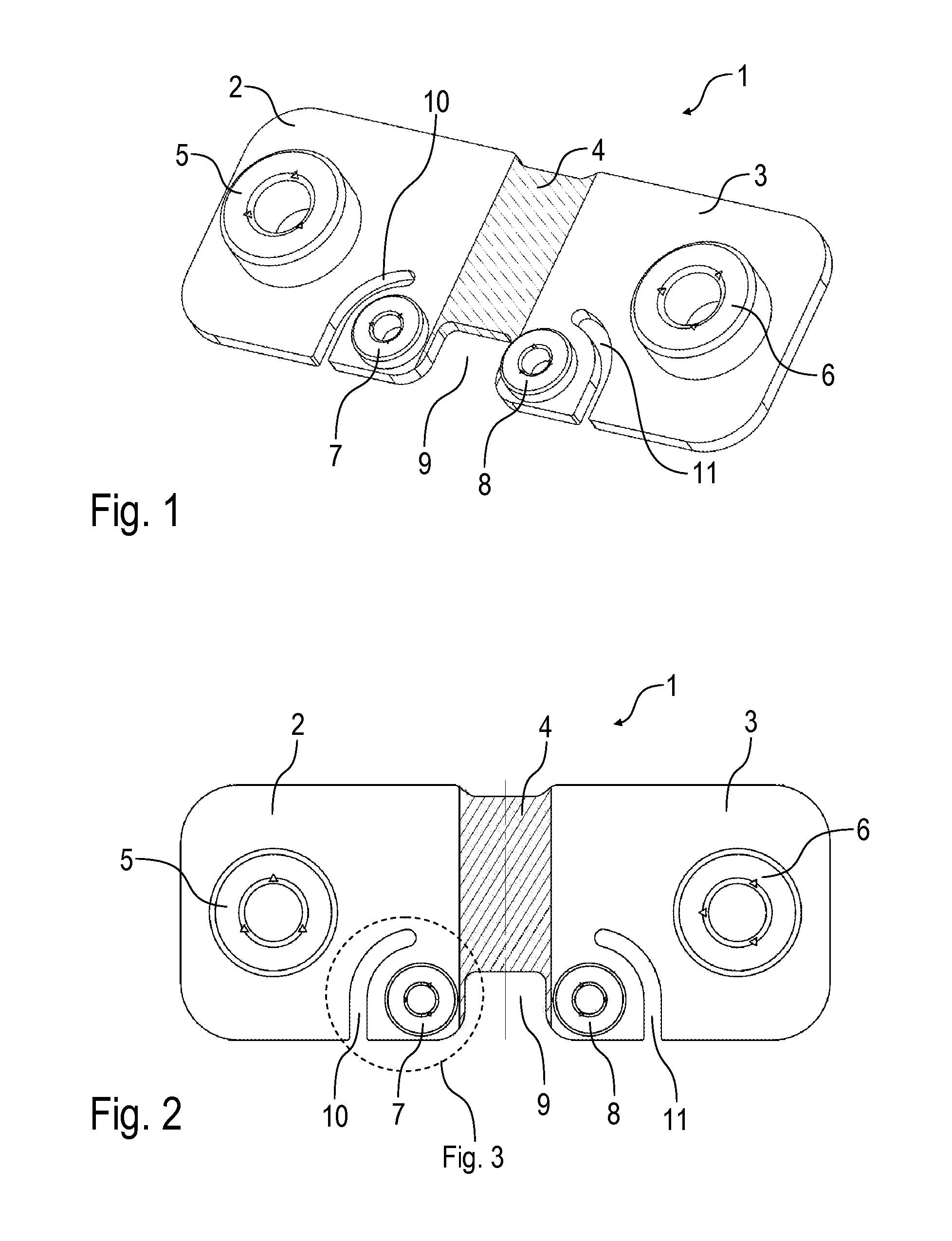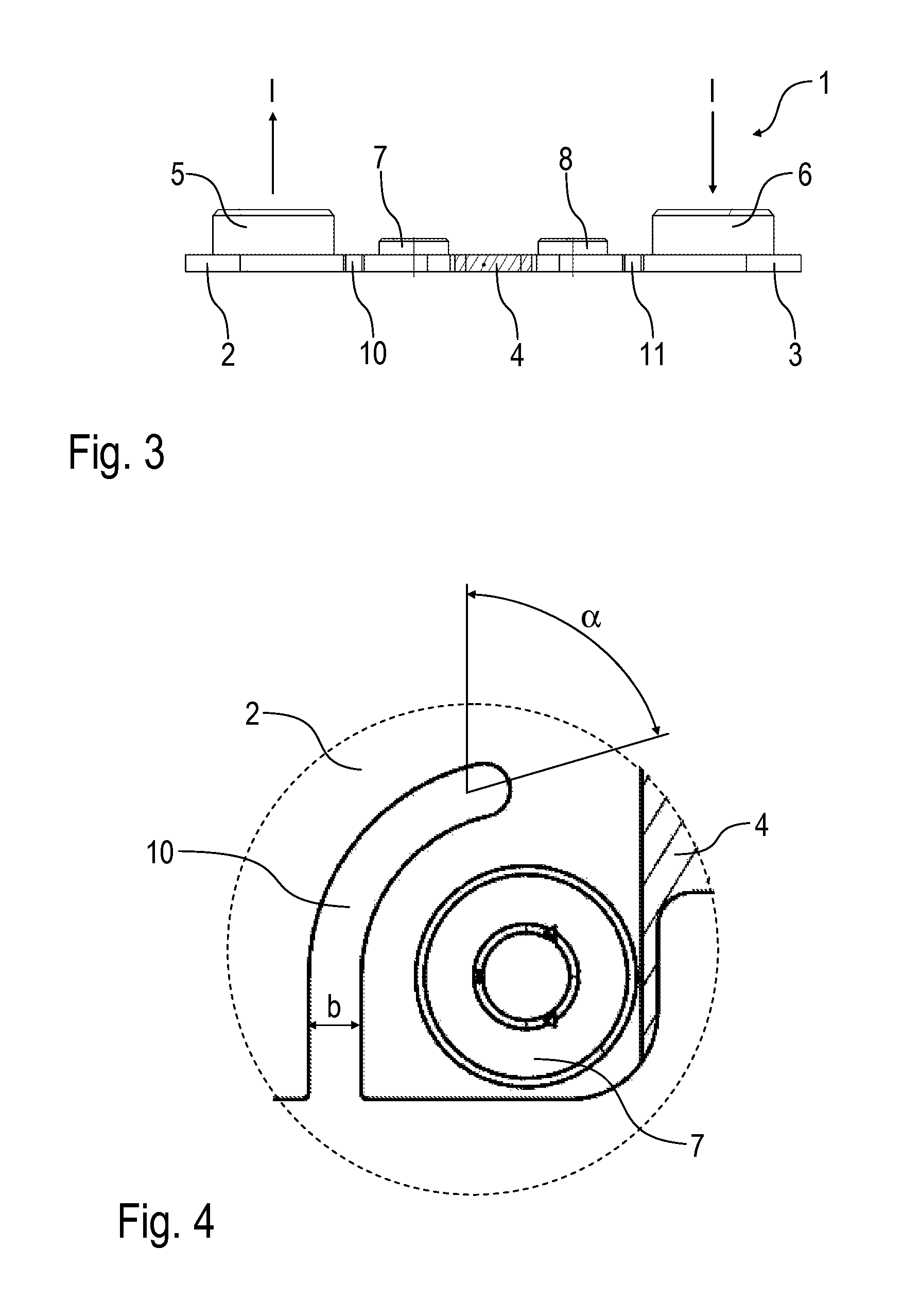Current-sense resistor
a current-sense resistor and resistor technology, applied in resistors, non-adjustable resistors, base elements, etc., can solve the problems of increasing the temperature constancy of current-sense resistors, and the favorable effect of current measurement temperature stability, so as to reduce the temperature dependence of measurement
- Summary
- Abstract
- Description
- Claims
- Application Information
AI Technical Summary
Benefits of technology
Problems solved by technology
Method used
Image
Examples
Embodiment Construction
[0006]The invention is based on the technical-physical finding that the conductor material (e.g. copper) of the plate-shaped connecting parts has a much higher temperature coefficient than the resistance material (e.g. Cu84Ni4Mn12) of the plate-shaped resistance element. During the measuring of the electrical current that drops over the resistance element between both voltage contacts, there is, however, also an influence on the measurement caused by the material of the connecting parts. The temperature dependency of the voltage measurement thus is not only determined by the temperature coefficient of the resistance material, but also by the temperature coefficient of the conductor material. Here, it is important to take into consideration that the temperature coefficient of copper, for example, is α=83.9·10−3 K−1 and thus greater by a factor of 195 than the temperature coefficient of Cu84Ni4Mn12 (Manganin®) with α=0.02·10−3 K−1. Due to the much greater temperature coefficient of co...
PUM
 Login to View More
Login to View More Abstract
Description
Claims
Application Information
 Login to View More
Login to View More - R&D
- Intellectual Property
- Life Sciences
- Materials
- Tech Scout
- Unparalleled Data Quality
- Higher Quality Content
- 60% Fewer Hallucinations
Browse by: Latest US Patents, China's latest patents, Technical Efficacy Thesaurus, Application Domain, Technology Topic, Popular Technical Reports.
© 2025 PatSnap. All rights reserved.Legal|Privacy policy|Modern Slavery Act Transparency Statement|Sitemap|About US| Contact US: help@patsnap.com



